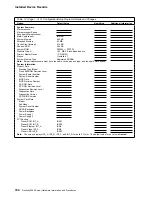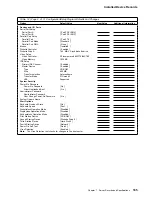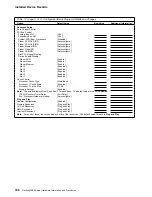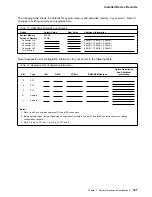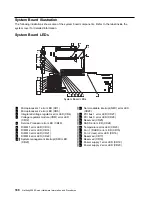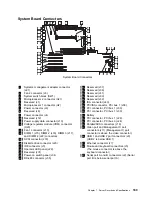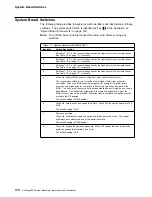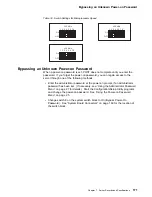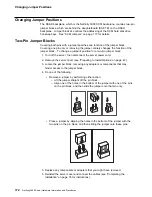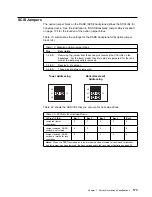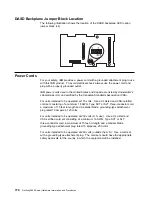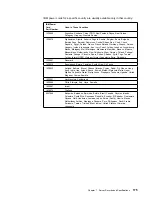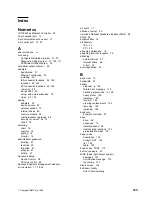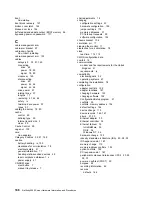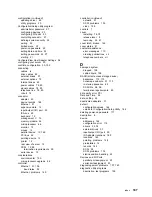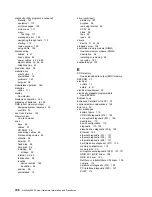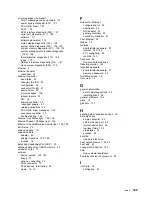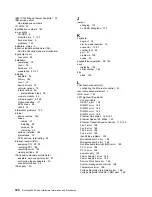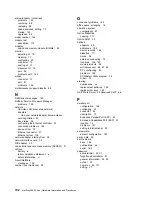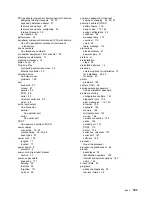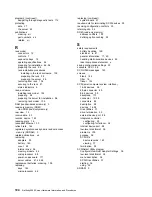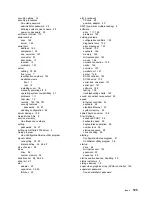
EDO. Extended data output.
EEPROM. Electrically erasable programmable
read-only memory.
EISA. Extended industry standard architecture.
electrically erasable programmable read-only
memory (EEPROM). EPROM that can be
reprogrammed while it is in the computer.
extended industry standard architecture (EISA). An
expansion bus architecture used in a network server
that provides compatibility among hardware
components.
EPP. Enhanced Parallel Port. An IEEE 1284 standard
signalling method for high speed bidirectional parallel
communication between a computer and a peripheral
device, that uses the hardware in the port to generate
handshaking, strobing, and so forth. It controls all the
transfers to and from the peripheral device, and is
generally used for non-printer peripherals such as
CD-ROM, tape, or hard disk drives. See also ECP.
F
file. A named set of records stored or processed as a
unit. (T)
flash memory. See electrically erasable
programmable read-only memory (EEPROM).
frame. (1) A data structure that consists of fields,
predetermined by a protocol, for the transmission of
user data and control data. The composition of a
frame, especially the number and types of fields, may
vary according to the type of protocol. (T)
frequency. The rate of signal oscillation, expressed in
hertz.
H
half-duplex. In data communication, pertaining to
transmission in only one direction at a time. Contrast
with duplex.
hard disk. A rigid magnetic disk such as the internal
disks used in the system units of personal-computer
systems and in external hard disk drives.
hard disk drive. A disk drive that reads and writes
data on rigid disks and can be installed in or connected
to a computer.
hardware. (1) All or part of the physical components
of an information processing system, such as
computers or peripheral devices. (T) (2) The
equipment, as opposed to the programming, of a
computer. (3) Contrast with software.
hexadecimal. Pertaining to a system of numbers to
the base 16; hexadecimal digits range from 0 through 9
and A through F, where A represents 10 and F
represents 15.
hot swap. (1) A hard disk subsystem feature of
servers and storage enclosures that enables you to
remove and replace hard disk drives without turning off
the system. (2) To replace a hard disk drive while the
system is turned on.
I
IEEE. Institute of Electrical and Electronics Engineers.
IEEE Standard 802.3. A series of standards that
define a type of LAN that uses an access method called
carrier sense multiple access with collision detection
(CSMA/CD) over cabling of various types. The cabling
types defined by the standard are thick coaxial
(10BASE5), thin coaxial (10BASE2), unshielded twisted
pair (10BASE-T), and optical fiber (10BASE-F).
initialization. Preparation of a system, device, or
program for operation.
input/output. Pertaining to a device, process, or
channel involved in data input, data output, or both.
instruction. A statement that specifies an operation to
be performed by a microprocessor, and that identifies
data involved in the operation.
Internet Packet Exchange (IPX). The routing protocol
used to connect Novell’s servers or any workstation or
router that implements IPX with other workstations.
Although similar to TCP/IP, it uses different packet
formats and terminology. See also TCP/IP and Xerox
Network Systems (XNS).
Internet Protocol (IP). A protocol used to route data
from its source to its destination in an Internet
environment.
I/O. Input/output.
IPX. Internet Packet Exchange.
IRQ. Interrupt request.
ISA. Industry standard architecture
Glossary
179

